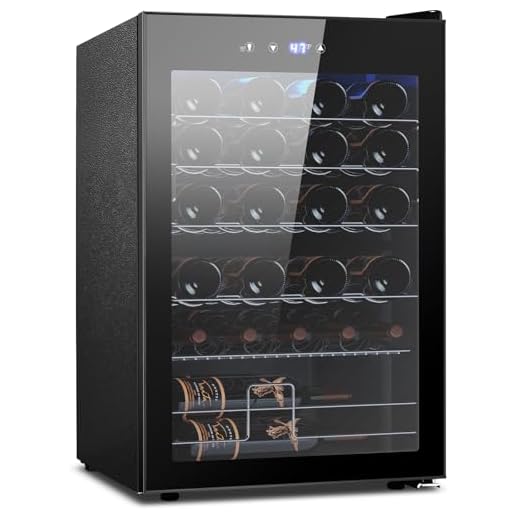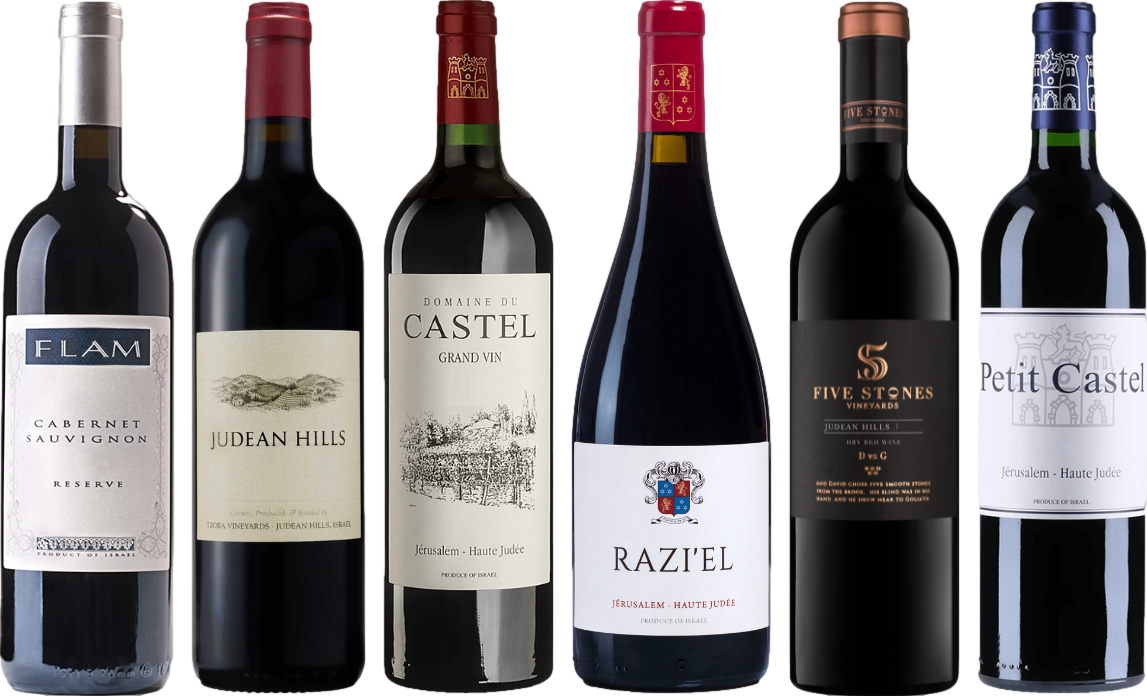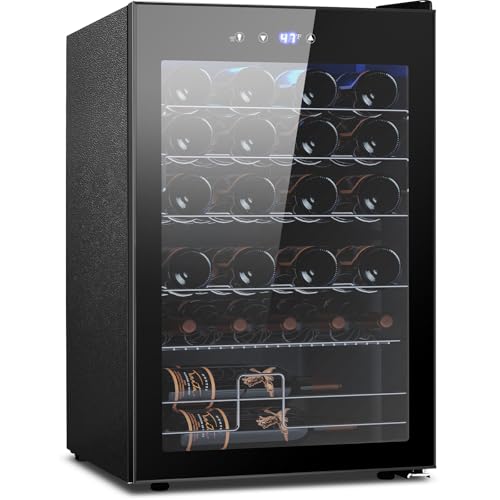



Serving a deep-colored grape beverage at around 60-65°F (15-18°C) is generally recommended. This range allows for the full expression of aromas and flavors, enhancing the tasting experience. Chilling below this temperature can mute the characteristics that define many varieties.
For lighter-bodied options, a slightly cooler temperature of 55°F (13°C) can be appropriate. This approach accentuates their freshness and fruitiness. However, heavier, more tannic selections benefit from being closer to room temperature, permitting the complex notes to unfold fully.
Storing bottles in a temperature-controlled environment helps maintain ideal conditions. For those looking to serve a chilled version, consider a brief period in the refrigerator–no more than 30 minutes–to strike a balance between coolness and flavor preservation.
Do You Serve Red Wine Cold
Chilling certain types of this fermented grape beverage can enhance its characteristics. Light-bodied varieties, such as Beaujolais or certain Pinot Noirs, benefit from a slight chill, typically ranging from 55°F to 60°F (13°C to 16°C). This temperature accentuates their fresh fruit profiles and makes them more refreshing.
For fuller-bodied selections, like Cabernet Sauvignon or Syrah, a cooler serving temperature is less common but can still be appropriate in warm climates or summer gatherings. A temperature around 60°F to 65°F (16°C to 18°C) may be ideal to balance the flavors without masking their complexity.
Experimenting with various temperatures can reveal different tasting notes. Cooling methods, such as an ice bucket for a quick chill or placing the bottle in the refrigerator for 20-30 minutes, can be effective. Monitoring the temperature with a wine thermometer ensures precision, allowing for an optimal tasting experience.
Ultimately, personal preference plays a significant role in how these beverages are enjoyed. There’s no right or wrong approach, but understanding temperature influences can enhance appreciation and enjoyment. Engaging with these nuances transforms the experience into something truly remarkable.
Ideal Serving Temperature for Red Wine
The optimal temperature for serving darker varieties typically ranges from 60°F to 65°F (15°C to 18°C). This range allows the complexities and nuances of flavors to shine without being masked by excessive warmth.
For lighter-bodied options, aim for slightly cooler conditions, around 55°F to 60°F (13°C to 15°C). This preserves the refreshing acidity and enhances the aromatic profile.
Temperature Tips
To achieve the desired temperature, consider placing the bottles in the refrigerator for about 30 minutes before pouring. A wine cooler can also provide precise control over temperature settings.
Avoid serving at room temperature, especially in warmer environments, as it can lead to an overpowering alcohol presence and diminished taste quality.
How Cold is Too Cold for Red Wine?
Temperatures below 55°F (13°C) can hinder flavor development and aroma expression in fuller-bodied varietals. For lighter options, temperatures around 50°F (10°C) may be appropriate, but too low can mask the wine’s character.
Consider the following guidelines:
- Below 45°F (7°C): Most wines lose their complexity and taste muted.
- 45°F – 50°F (7°C – 10°C): Acceptable for light-bodied varieties, but flavors may still be dulled.
- 50°F – 55°F (10°C – 13°C): Ideal range for lighter selections, allowing for better flavor profiles.
- 55°F – 65°F (13°C – 18°C): Perfect for fuller-bodied choices, accentuating depth and richness.
Experimenting with temperature can reveal new nuances and enhance enjoyment. Always consider the specific varietal and its characteristics when determining the optimal serving temperature. Adjust accordingly for personal preference, but avoid extremes that compromise the experience.
Effects of Temperature on Red Wine Flavor
A temperature range of 60°F to 65°F (15°C to 18°C) maximizes the complexity of flavors in darker varietals. At this elevation, the tannins soften, and aromatic compounds express themselves more vibrantly. Lower temperatures can mute these characteristics, resulting in a lackluster experience.
Flavor Profile Alterations
When the temperature dips below 55°F (13°C), nuances become obscured. Fruit notes may retreat, while earthy undertones can dominate. Conversely, serving at temperatures exceeding 70°F (21°C) can lead to an overly alcoholic perception, overshadowing subtler flavors.
| Temperature (°F) | Flavor Characteristics |
|---|---|
| Below 55 | Muted fruit, enhanced earthiness |
| 60-65 | Balanced fruit, aromatic expression |
| Above 70 | Overpowering alcohol, overshadowed subtleties |
Practical Tips
To enhance enjoyment, consider the following strategies: Allow bottles to breathe at room temperature before consumption, decanting may also aid in optimal exposure to air. For pairing, try matching flavors with dishes such as flank steak, which can be prepared using this how to cook flank steak in oven cast iron skillet guide for the best results.
Best Practices for Chilling Red Wine
To achieve optimal refreshment, a temperature range of 55°F to 65°F (13°C to 18°C) is recommended for lighter variants, while fuller-bodied options benefit from slightly warmer conditions. For a quick chill, placing a bottle in an ice bucket filled with equal parts ice and water for about 15-20 minutes is most effective. This method ensures even cooling without the risk of over-chilling.
For a more gradual approach, stashing a bottle in the refrigerator for about 30-60 minutes is advisable. Avoid extended refrigeration, as prolonged exposure can lead to a loss of aromatic compounds and flavor depth. When transitioning from cooler environments, allowing the bottle to sit at room temperature for a few minutes before consumption can enhance the tasting experience.
Utilizing a wine thermometer can assist in monitoring temperature accurately. If a wine feels too warm after pouring, swirling the glass can help release aromas while slightly lowering the temperature through the air exposure.
Be mindful of serving conditions; ambient temperature can influence perception. For instance, the warmth of a room may elevate the wine’s character. A quick chill before serving can mitigate this effect, ensuring a balanced and enjoyable tasting experience. Consider the occasion and food pairings, as they may warrant slight adjustments in temperature preferences.
Common Misconceptions About Temperature for Red Varieties
A prevalent myth is that all darker varietals should never be served chilled. While many enthusiasts believe this, a slight drop in temperature can enhance certain characteristics. Ideal enjoyment often lies between 55°F and 65°F (13°C to 18°C), but this doesn’t mean that a cooler profile is off the table.
Myth: All Dark Wines Are Best at Room Temperature
This assumption overlooks the complexity of different varietals. For instance:
- Some lighter-bodied options benefit from a slight chill, which can accentuate their acidity and freshness.
- Full-bodied selections may reveal more depth with a modest cooling, softening heavier tannins and highlighting fruit flavors.
Myth: Chilling Will Ruin Quality
Another common belief is that cooling diminishes flavor. In reality:
- Chilling can enhance aromatic profiles and balance sweetness in fruit-forward selections.
- It can also reduce the perception of alcohol, making the experience more enjoyable.
Understanding these misconceptions can lead to a richer tasting experience, allowing exploration of various profiles and enhancing enjoyment. Adjusting temperatures based on varietal characteristics rather than strict rules can open up a whole new world of flavors.
Pairing Chilled Red Varietals with Cuisine
Chilled varietals can create delightful combinations with various dishes, enhancing the overall dining experience. When selecting a companion for these refreshing beverages, consider the flavor profile of both the drink and the food.
Seafood and Poultry Pairings
Pairings with seafood, particularly grilled or chilled preparations, work wonderfully. A light-bodied Pinot Noir complements dishes like seared tuna or shrimp cocktails, offering a contrast that enhances the freshness of the seafood. For poultry, especially roasted or herb-marinated varieties, a chilled Grenache provides a lovely balance of fruitiness and acidity.
Vegetable Dishes and Salads
Vegetarian options benefit significantly from the acidity and fruit characteristics of a chilled Cabernet Franc. Dishes featuring roasted vegetables or hearty salads, particularly those with vinaigrette, harmonize beautifully. The cooling effect of the wine can elevate the flavors of the ingredients, making the meal more enjoyable.









